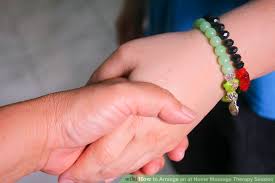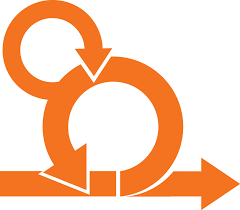We found 16 results that contain "good"
Posted on: #iteachmsu



Posted by
over 4 years ago

Good time management skills help students prioritize tasks so they are able to complete school work and assignments on time. Students are able to plan ahead, set aside the time they need for projects and assignments, and make better use of that time.
Becoming better at managing time allows students to become more organized, more confident, and learn more effectively. It can also help students avoid the dreaded procrastination problem, which can be a slippery slope to stress, frustration, and poor grades.
Effective time management skills are especially important for high school students. As students enter high school, they have to deal with more subjects, assignments, tests, and extracurriculars. Good time management skills can help keep them on track and reduce stress as they take on more work.
Becoming better at managing time allows students to become more organized, more confident, and learn more effectively. It can also help students avoid the dreaded procrastination problem, which can be a slippery slope to stress, frustration, and poor grades.
Effective time management skills are especially important for high school students. As students enter high school, they have to deal with more subjects, assignments, tests, and extracurriculars. Good time management skills can help keep them on track and reduce stress as they take on more work.
Assessing Learning
Posted on: #iteachmsu



Posted by
over 4 years ago

Education is the key to everything that is good in our world today. Advances in computers, information technology, math, medicine, psychology, engineering, and every other discipline would be impossible if education didn't help us build on the advances of the great minds that came before us.
In fact, it is essential that as a society that we keep learning new things. Education is not only about the past and present, but it is also the key to the future. It will help discipline our children for the intellectual challenges of the rest of the 21st century.
In fact, it is essential that as a society that we keep learning new things. Education is not only about the past and present, but it is also the key to the future. It will help discipline our children for the intellectual challenges of the rest of the 21st century.
Posted on: #iteachmsu



Posted by
over 1 year ago

What I Did To Stimulate My Child’s Brain Activity
1. Communicate With Them
I used to talk to my daughter continuously (right from her birth won’t be an exaggeration). I used to label every action I was doing, right from standing up, sitting down, singing, cooking, etc. I also marked every object she was looking at like door, plate, stroller, shoes; feeling- like the wind, heat, cold; tasting- like sour, sweet, salty, etc. So, by the time she was nine months old, she had a good vocabulary, a good grasp of all the activities people did around her and understood different tastes.
2. Introduce Books, Storytelling And Narration
Books play a vital role in both brain development and language skills. They’re also the first step towards gross motor skill development (holding books, turning pages). I had introduced cloth books & soft sponge books to her when she was two months old, board books from five months, and paper books after she turned a year old. She liked colourful objects, animals, birds & shapes till around nine months and then loved listening to simple short stories from illustrated books (no fairy tales). And activity books (match the shadows, pairing similar objects) after she turned 2.
3. Ask Questions To Stimulate The Thinking Process
As I introduced the books, I named the objects she was seeing in all the languages I knew. Then I gradually started describing them (shape, colour, use). I explained the environment in which they are found and constantly asked her questions. For example, pointing at a rabbit, instead of asking “what is this?” I asked her, “it has long ears, a short fluffy tail, is soft & white like cotton. What is it?”. I continued with the exercise even when we went out to some shop or mall. We played the “I spy” game in the house & outdoors. I would describe objects and ask her to identify them. It was fun.
4. Let Your Kids Explore - Touch, Feel, Smell, Taste
I encouraged the natural tendency that kids have to explore the world around them. (But of course, with discretion). I never stopped her from playing with stones or mud in the garden, things like tasting sour lime or bitter gourd, smell a flower on the plant, etc. She learned by herself that stones were hard, mud was soft, ice was cold, the paper could be torn with hands and rubber bands were elastic & so on. Things that were not safe for her we explained to her & kept out of reach- like touching a hot cup of tea could burn her skin, pressing against a glass door could break the glass, playing with a sharp object could hurt, etc.
5. Music-Dance-Physical Activity
Kids love music & I was not surprised the other day when she sang the whole song “lakdi ki kathi, kathi pe ghoda” and danced to the tune as well. She now sings quite a few songs & rhymes. It seems like she has a good ear for music because she has been listening to it since childhood. I also noticed that a soothing instrumental piece calms her down whereas a song like “lungi dance” excites her. So, dance becomes an excellent physical activity to channelise the never-ending energy of a kid, and singing & listening to songs becomes a great mental activity.
6. Building Event Memory, Associating Things & Situations
Kids these days use their smartphones very dexterously, and photos are their favourite part. Although I have limited her total gadget time (phone, iPad, TV) to 30-45 minutes, I make good use of the photos she sees to build her event memory. Whenever she sees some old photos, I describe to her the event. I tell her who all were present, which places we had visited, etc. After several repetitions, this activity has helped her build a memory of past events. She also recognises people from the photos even if she meets them after a long time. She has learned to associate certain things with specific events like lanterns with Diwali or Santa Claus with Christmas.
7. Independence
It was okay if she initially spilt a little food or water on the table, but she learned to hold her spoon & cup. It took a lot of time to wear shoes, most of the time, she put them on the wrong feet, but now she wears them perfectly. Kids figure out things themselves, and we need not tell them how to do it. We need to give them some time. I am happy my child eats independently, combs her hair, brushes her teeth, & wears her shoes. I always encouraged her to do these simple activities even if they were time-consuming initially and she couldn’t do them at all.
8. Age-Appropriate Toys, Art, And Craft
Use age-appropriate toys like building blocks, push & go toys, insert shapes in slots for gross motor skills development. Some simple paper-folding art, glueing stickers on papers, colouring can also help refine motor skills.
9. Logical Reasoning & Decision Making
Kids think logically, and we just have to encourage this to stimulate their brain activity and enhance their thinking process. I always try to reason things for her (wherever possible). And she has developed the same habit. I make her choose between two things at times- simple things like which dress she wants to put on or which game she wants to play- the decision-making is a good brain stimulator.
10. The Most Important - Excellent Nutrition
Good food is a key to good development and a good mood as well. A healthy body nurtures a healthy mind. Fortunately, my daughter is not a picky eater but there are days when she gives me a hard time.
A balanced nutritious diet is essential. Vegetables, seasonal fruits, eggs, pulses are all building blocks for a proper diet. Milk with #Junior Horlicks is also a great choice as it includes nutrients that support brain development, such as choline, iron, and iodine. It also contains nutrients that support physical growth, such as calcium, Vitamin D, Vitamin K, and proteins, and also nutrients to support healthy immune function such as Vitamin E, A, Selenium & Copper. You can design a wholesome diet with roti, rice, whole-grain bread, wheat pasta, curd, cheese and maybe a scoop of ice cream and some sweets once in a while.
1. Communicate With Them
I used to talk to my daughter continuously (right from her birth won’t be an exaggeration). I used to label every action I was doing, right from standing up, sitting down, singing, cooking, etc. I also marked every object she was looking at like door, plate, stroller, shoes; feeling- like the wind, heat, cold; tasting- like sour, sweet, salty, etc. So, by the time she was nine months old, she had a good vocabulary, a good grasp of all the activities people did around her and understood different tastes.
2. Introduce Books, Storytelling And Narration
Books play a vital role in both brain development and language skills. They’re also the first step towards gross motor skill development (holding books, turning pages). I had introduced cloth books & soft sponge books to her when she was two months old, board books from five months, and paper books after she turned a year old. She liked colourful objects, animals, birds & shapes till around nine months and then loved listening to simple short stories from illustrated books (no fairy tales). And activity books (match the shadows, pairing similar objects) after she turned 2.
3. Ask Questions To Stimulate The Thinking Process
As I introduced the books, I named the objects she was seeing in all the languages I knew. Then I gradually started describing them (shape, colour, use). I explained the environment in which they are found and constantly asked her questions. For example, pointing at a rabbit, instead of asking “what is this?” I asked her, “it has long ears, a short fluffy tail, is soft & white like cotton. What is it?”. I continued with the exercise even when we went out to some shop or mall. We played the “I spy” game in the house & outdoors. I would describe objects and ask her to identify them. It was fun.
4. Let Your Kids Explore - Touch, Feel, Smell, Taste
I encouraged the natural tendency that kids have to explore the world around them. (But of course, with discretion). I never stopped her from playing with stones or mud in the garden, things like tasting sour lime or bitter gourd, smell a flower on the plant, etc. She learned by herself that stones were hard, mud was soft, ice was cold, the paper could be torn with hands and rubber bands were elastic & so on. Things that were not safe for her we explained to her & kept out of reach- like touching a hot cup of tea could burn her skin, pressing against a glass door could break the glass, playing with a sharp object could hurt, etc.
5. Music-Dance-Physical Activity
Kids love music & I was not surprised the other day when she sang the whole song “lakdi ki kathi, kathi pe ghoda” and danced to the tune as well. She now sings quite a few songs & rhymes. It seems like she has a good ear for music because she has been listening to it since childhood. I also noticed that a soothing instrumental piece calms her down whereas a song like “lungi dance” excites her. So, dance becomes an excellent physical activity to channelise the never-ending energy of a kid, and singing & listening to songs becomes a great mental activity.
6. Building Event Memory, Associating Things & Situations
Kids these days use their smartphones very dexterously, and photos are their favourite part. Although I have limited her total gadget time (phone, iPad, TV) to 30-45 minutes, I make good use of the photos she sees to build her event memory. Whenever she sees some old photos, I describe to her the event. I tell her who all were present, which places we had visited, etc. After several repetitions, this activity has helped her build a memory of past events. She also recognises people from the photos even if she meets them after a long time. She has learned to associate certain things with specific events like lanterns with Diwali or Santa Claus with Christmas.
7. Independence
It was okay if she initially spilt a little food or water on the table, but she learned to hold her spoon & cup. It took a lot of time to wear shoes, most of the time, she put them on the wrong feet, but now she wears them perfectly. Kids figure out things themselves, and we need not tell them how to do it. We need to give them some time. I am happy my child eats independently, combs her hair, brushes her teeth, & wears her shoes. I always encouraged her to do these simple activities even if they were time-consuming initially and she couldn’t do them at all.
8. Age-Appropriate Toys, Art, And Craft
Use age-appropriate toys like building blocks, push & go toys, insert shapes in slots for gross motor skills development. Some simple paper-folding art, glueing stickers on papers, colouring can also help refine motor skills.
9. Logical Reasoning & Decision Making
Kids think logically, and we just have to encourage this to stimulate their brain activity and enhance their thinking process. I always try to reason things for her (wherever possible). And she has developed the same habit. I make her choose between two things at times- simple things like which dress she wants to put on or which game she wants to play- the decision-making is a good brain stimulator.
10. The Most Important - Excellent Nutrition
Good food is a key to good development and a good mood as well. A healthy body nurtures a healthy mind. Fortunately, my daughter is not a picky eater but there are days when she gives me a hard time.
A balanced nutritious diet is essential. Vegetables, seasonal fruits, eggs, pulses are all building blocks for a proper diet. Milk with #Junior Horlicks is also a great choice as it includes nutrients that support brain development, such as choline, iron, and iodine. It also contains nutrients that support physical growth, such as calcium, Vitamin D, Vitamin K, and proteins, and also nutrients to support healthy immune function such as Vitamin E, A, Selenium & Copper. You can design a wholesome diet with roti, rice, whole-grain bread, wheat pasta, curd, cheese and maybe a scoop of ice cream and some sweets once in a while.
Posted on: #iteachmsu



Posted by
over 1 year ago

2. Introduce Books, Storytelling And Narration -- Edited
Books play a vital role in both brain development and language skills. They’re also the first step towards gross motor skill development (holding books, turning pages). I had introduced cloth books & soft sponge books to her when she was two months old, board books from five months, and paper books after she turned a year old. She liked colourful objects, animals, birds & shapes till around nine months and then loved listening to simple short stories from illustrated books (no fairy tales). And activity books (match the shadows, pairing similar objects) after she turned 2.
3. Ask Questions To Stimulate The Thinking Process
As I introduced the books, I named the objects she was seeing in all the languages I knew. Then I gradually started describing them (shape, colour, use). I explained the environment in which they are found and constantly asked her questions. For example, pointing at a rabbit, instead of asking “what is this?” I asked her, “it has long ears, a short fluffy tail, is soft & white like cotton. What is it?”. I continued with the exercise even when we went out to some shop or mall. We played the “I spy” game in the house & outdoors. I would describe objects and ask her to identify them. It was fun.
4. Let Your Kids Explore - Touch, Feel, Smell, Taste
I encouraged the natural tendency that kids have to explore the world around them. (But of course, with discretion). I never stopped her from playing with stones or mud in the garden, things like tasting sour lime or bitter gourd, smell a flower on the plant, etc. She learned by herself that stones were hard, mud was soft, ice was cold, the paper could be torn with hands and rubber bands were elastic & so on. Things that were not safe for her we explained to her & kept out of reach- like touching a hot cup of tea could burn her skin, pressing against a glass door could break the glass, playing with a sharp object could hurt, etc.
5. Music-Dance-Physical Activity
Kids love music & I was not surprised the other day when she sang the whole song “lakdi ki kathi, kathi pe ghoda” and danced to the tune as well. She now sings quite a few songs & rhymes. It seems like she has a good ear for music because she has been listening to it since childhood. I also noticed that a soothing instrumental piece calms her down whereas a song like “lungi dance” excites her. So, dance becomes an excellent physical activity to channelise the never-ending energy of a kid, and singing & listening to songs becomes a great mental activity.
6. Building Event Memory, Associating Things & Situations
Kids these days use their smartphones very dexterously, and photos are their favourite part. Although I have limited her total gadget time (phone, iPad, TV) to 30-45 minutes, I make good use of the photos she sees to build her event memory. Whenever she sees some old photos, I describe to her the event. I tell her who all were present, which places we had visited, etc. After several repetitions, this activity has helped her build a memory of past events. She also recognises people from the photos even if she meets them after a long time. She has learned to associate certain things with specific events like lanterns with Diwali or Santa Claus with Christmas.
7. Independence
It was okay if she initially spilt a little food or water on the table, but she learned to hold her spoon & cup. It took a lot of time to wear shoes, most of the time, she put them on the wrong feet, but now she wears them perfectly. Kids figure out things themselves, and we need not tell them how to do it. We need to give them some time. I am happy my child eats independently, combs her hair, brushes her teeth, & wears her shoes. I always encouraged her to do these simple activities even if they were time-consuming initially and she couldn’t do them at all.
8. Age-Appropriate Toys, Art, And Craft
Use age-appropriate toys like building blocks, push & go toys, insert shapes in slots for gross motor skills development. Some simple paper-folding art, glueing stickers on papers, colouring can also help refine motor skills.
9. Logical Reasoning & Decision Making
Kids think logically, and we just have to encourage this to stimulate their brain activity and enhance their thinking process. I always try to reason things for her (wherever possible). And she has developed the same habit. I make her choose between two things at times- simple things like which dress she wants to put on or which game she wants to play- the decision-making is a good brain stimulator.
10. The Most Important - Excellent Nutrition
Good food is a key to good development and a good mood as well. A healthy body nurtures a healthy mind. Fortunately, my daughter is not a picky eater but there are days when she gives me a hard time.
A balanced nutritious diet is essential. Vegetables, seasonal fruits, eggs, pulses are all building blocks for a proper diet. Milk with #Junior Horlicks is also a great choice as it includes nutrients that support brain development, such as choline, iron, and iodine. It also contains nutrients that support physical growth, such as calcium, Vitamin D, Vitamin K, and proteins, and also nutrients to support healthy immune function such as Vitamin E, A, Selenium & Copper. You can design a wholesome diet with roti, rice, whole-grain bread, wheat pasta, curd, cheese and maybe a scoop of ice cream and some sweets once in a while.
Books play a vital role in both brain development and language skills. They’re also the first step towards gross motor skill development (holding books, turning pages). I had introduced cloth books & soft sponge books to her when she was two months old, board books from five months, and paper books after she turned a year old. She liked colourful objects, animals, birds & shapes till around nine months and then loved listening to simple short stories from illustrated books (no fairy tales). And activity books (match the shadows, pairing similar objects) after she turned 2.
3. Ask Questions To Stimulate The Thinking Process
As I introduced the books, I named the objects she was seeing in all the languages I knew. Then I gradually started describing them (shape, colour, use). I explained the environment in which they are found and constantly asked her questions. For example, pointing at a rabbit, instead of asking “what is this?” I asked her, “it has long ears, a short fluffy tail, is soft & white like cotton. What is it?”. I continued with the exercise even when we went out to some shop or mall. We played the “I spy” game in the house & outdoors. I would describe objects and ask her to identify them. It was fun.
4. Let Your Kids Explore - Touch, Feel, Smell, Taste
I encouraged the natural tendency that kids have to explore the world around them. (But of course, with discretion). I never stopped her from playing with stones or mud in the garden, things like tasting sour lime or bitter gourd, smell a flower on the plant, etc. She learned by herself that stones were hard, mud was soft, ice was cold, the paper could be torn with hands and rubber bands were elastic & so on. Things that were not safe for her we explained to her & kept out of reach- like touching a hot cup of tea could burn her skin, pressing against a glass door could break the glass, playing with a sharp object could hurt, etc.
5. Music-Dance-Physical Activity
Kids love music & I was not surprised the other day when she sang the whole song “lakdi ki kathi, kathi pe ghoda” and danced to the tune as well. She now sings quite a few songs & rhymes. It seems like she has a good ear for music because she has been listening to it since childhood. I also noticed that a soothing instrumental piece calms her down whereas a song like “lungi dance” excites her. So, dance becomes an excellent physical activity to channelise the never-ending energy of a kid, and singing & listening to songs becomes a great mental activity.
6. Building Event Memory, Associating Things & Situations
Kids these days use their smartphones very dexterously, and photos are their favourite part. Although I have limited her total gadget time (phone, iPad, TV) to 30-45 minutes, I make good use of the photos she sees to build her event memory. Whenever she sees some old photos, I describe to her the event. I tell her who all were present, which places we had visited, etc. After several repetitions, this activity has helped her build a memory of past events. She also recognises people from the photos even if she meets them after a long time. She has learned to associate certain things with specific events like lanterns with Diwali or Santa Claus with Christmas.
7. Independence
It was okay if she initially spilt a little food or water on the table, but she learned to hold her spoon & cup. It took a lot of time to wear shoes, most of the time, she put them on the wrong feet, but now she wears them perfectly. Kids figure out things themselves, and we need not tell them how to do it. We need to give them some time. I am happy my child eats independently, combs her hair, brushes her teeth, & wears her shoes. I always encouraged her to do these simple activities even if they were time-consuming initially and she couldn’t do them at all.
8. Age-Appropriate Toys, Art, And Craft
Use age-appropriate toys like building blocks, push & go toys, insert shapes in slots for gross motor skills development. Some simple paper-folding art, glueing stickers on papers, colouring can also help refine motor skills.
9. Logical Reasoning & Decision Making
Kids think logically, and we just have to encourage this to stimulate their brain activity and enhance their thinking process. I always try to reason things for her (wherever possible). And she has developed the same habit. I make her choose between two things at times- simple things like which dress she wants to put on or which game she wants to play- the decision-making is a good brain stimulator.
10. The Most Important - Excellent Nutrition
Good food is a key to good development and a good mood as well. A healthy body nurtures a healthy mind. Fortunately, my daughter is not a picky eater but there are days when she gives me a hard time.
A balanced nutritious diet is essential. Vegetables, seasonal fruits, eggs, pulses are all building blocks for a proper diet. Milk with #Junior Horlicks is also a great choice as it includes nutrients that support brain development, such as choline, iron, and iodine. It also contains nutrients that support physical growth, such as calcium, Vitamin D, Vitamin K, and proteins, and also nutrients to support healthy immune function such as Vitamin E, A, Selenium & Copper. You can design a wholesome diet with roti, rice, whole-grain bread, wheat pasta, curd, cheese and maybe a scoop of ice cream and some sweets once in a while.
Disciplinary Content
Posted on: #iteachmsu


Posted by
over 4 years ago
It improves your thinking, listening and speaking skills. It also promotes your confidence level. It is an effective tool in problem solving, decision making and personality assessment. GD skills may ensure academic success, popularity and good admission or job offer.
It improves your thinking, listening and speaking skills. It also promotes your confidence level. It is an effective tool in problem solving, decision making and personality assessment. GD skills may ensure academic success, popularity and good admission or job offer.
It improves your thinking, listening and speaking skills. It also promotes your confidence level. It is an effective tool in problem solving, decision making and personality assessment. GD skills may ensure academic success, popularity and good admission or job offer.
Posted on: #iteachmsu



Posted by
over 6 years ago

Science and technology is a topic that encompasses science, technology, and the interactions between the two. Science is a systematic enterprise that builds and organizes knowledge in the form of explanations and predictions about nature and the universe. Technology is the collection of techniques, methods or processes used in the production of goods or services or in the accomplishment of objectives, such as scientific investigation, or any other consumer demands.
Science may drive technological development, by generating demand for new instruments to address a scientific question, or by illustrating technical possibilities previously unconsidered. In turn, technology may drive scientific investigation, by creating demand for technological improvements that can only be produced through research, and by raising questions about the underlying principles that a new technology relies on.
For the majority of human history, technological improvements were achieved by chance, trial and error, or spontaneous inspiration. When the modern scientific enterprise matured in the Enlightenment, it primarily concerned itself with basic questions of nature. Research and development directed towards immediate technical application is a relatively recent occurrence, arising with the Industrial Revolution and becoming commonplace in the 20th century.
As academic fields, science and technology are often grouped with engineering and mathematics, as the STEM fields.
Science may drive technological development, by generating demand for new instruments to address a scientific question, or by illustrating technical possibilities previously unconsidered. In turn, technology may drive scientific investigation, by creating demand for technological improvements that can only be produced through research, and by raising questions about the underlying principles that a new technology relies on.
For the majority of human history, technological improvements were achieved by chance, trial and error, or spontaneous inspiration. When the modern scientific enterprise matured in the Enlightenment, it primarily concerned itself with basic questions of nature. Research and development directed towards immediate technical application is a relatively recent occurrence, arising with the Industrial Revolution and becoming commonplace in the 20th century.
As academic fields, science and technology are often grouped with engineering and mathematics, as the STEM fields.
Disciplinary Content
Posted on: #iteachmsu



Posted by
almost 2 years ago

Science & technology is a topic that encompasses science, technology, and the interactions between the two. Science is a systematic enterprise that builds and organizes knowledge in the form of explanations and predictions about nature and the universe. Technology is the collection of techniques, methods or processes used in the production of goods or services or in the accomplishment of objectives, such as scientific investigation, or any other consumer demands.
Science may drive technological development, by generating demand for new instruments to address a scientific question, or by illustrating technical possibilities previously unconsidered. In turn, technology may drive scientific investigation, by creating demand for technological improvements that can only be produced through research, and by raising questions about the underlying principles that a new technology relies on.
For the majority of human history, technological improvements were achieved by chance, trial and error, or spontaneous inspiration. When the modern scientific enterprise matured in the Enlightenment, it primarily concerned itself with basic questions of nature. Research and development directed towards immediate technical application is a relatively recent occurrence, arising with the Industrial Revolution and becoming commonplace in the 20th century.
As academic fields, science and technology are often grouped with engineering and mathematics, as the STEM fields.
Science may drive technological development, by generating demand for new instruments to address a scientific question, or by illustrating technical possibilities previously unconsidered. In turn, technology may drive scientific investigation, by creating demand for technological improvements that can only be produced through research, and by raising questions about the underlying principles that a new technology relies on.
For the majority of human history, technological improvements were achieved by chance, trial and error, or spontaneous inspiration. When the modern scientific enterprise matured in the Enlightenment, it primarily concerned itself with basic questions of nature. Research and development directed towards immediate technical application is a relatively recent occurrence, arising with the Industrial Revolution and becoming commonplace in the 20th century.
As academic fields, science and technology are often grouped with engineering and mathematics, as the STEM fields.
Disciplinary Content
Posted on: #iteachmsu



Posted by
about 2 years ago

Start by assessing your existing approach. How good are you at organizing your time so that you get the important things done well? Can you balance your time between different activities? And when you do make time to do something, are you able to focus – and get it finished
Assessing Learning
